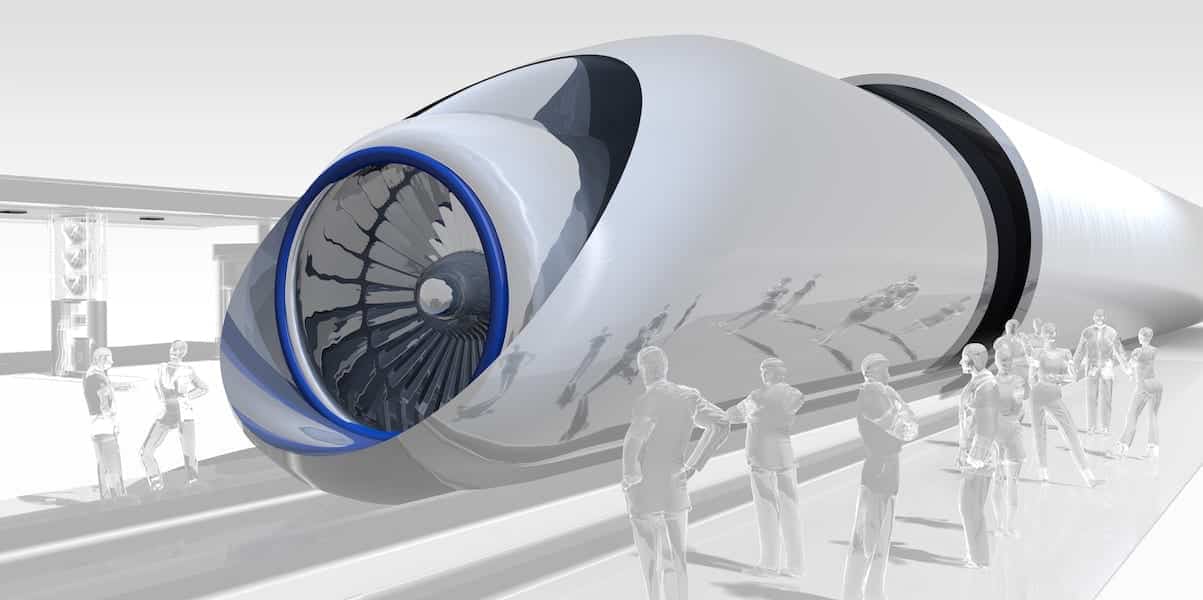When Elon Musk isn’t sending things into space, he’s thinking about how to get people around here on Earth.
You may have heard about the hyperloop, a transportation concept straight out of Elon Musk’s mind that has the potential to safely and efficiently take people at speeds that even commercial jets can’t hit.
It sounds awesome, but unless you live inside Elon Musk’s mind, or just a computer simulation he created, it’s not clear exactly what the hyperloop is or how it works.
For us regular humans, here’s an easy-to-understand guide to the hyperloop concept and technology.
How it works
They hyperloop is all about speed. Musk imagines the system hitting, and possibly exceeding, speeds of 700 miles per hour. To put it in perspective, commercial airliners tend to top out just under 600 miles per hour. Meanwhile, the famous Shinkansen bullet trains of Japan top out at just 200 MPH.
How would the hyperloop be able to build up so much speed? It’s actually a similar principle to what many modern-day bullet trains use: magnets. Remember when you were a kid and you would turn magnets around to create a push or pull effect? That’s the same principle at work with the hyperloop.
Magnetic accelerators propel the vehicle (which Musk terms a pod) at intervals along the way, creating a constant speed that grows very quickly.
Sounds dangerous, doesn’t it? That’s why Musk proposes using a tube for the pod to travel through. The tubes can create a low-pressure environment around the pod, creating a cushion of air that allows it travel safely and smoothly. Similar to the cabin of an airplane, where you can (un)comfortably sit back and watch movies even though you’re moving insanely fast.
And yes, it’s very much like something out of The Jetsons.
OK, but that’s just a concept. Does it actually work?
We’re glad you asked.
Turns out, it really does work. Well, at least in very well-controlled environments with no humans on board.
SpaceX held a competition last year to prove that the system could work, and multiple teams were successful. If you want to get a sense of just how fast it goes, watch the end of this video:
Why do we need this?
Imagine heading to Vail to catch some fresh powder and watch the clogged highway full of motorists become distant specks as you get there in a matter of minutes, not hours. Need to get to Colorado Spring during rush hour? No problem, it will take you about 9 minutes from Denver in the hyperloop.
How about something bigger, like going cross-country from Los Angeles to New York City? What would normally take you well over five hours by plane could take just 35 to 45 minutes in the hyperloop.
The hyperloop would alter transportation in dramatic ways, reducing or eliminating the need for other environmentally harmful and costly travel options we use today. And as urban populations swell, more options for getting around won’t just be nice, they’ll be critical to managing cities in smart, safe ways.
Potential challenges
Of course, building a revolutionary transportation system isn’t without its quirks.
There are concerns about pressure buildup occurring in front of the pods, which Musk proposes alleviating by using air compressors to move air from the front to tail.
But the biggest challenge may be infrastructure. The tubes would need to be built along mostly straight, level ground. Constructing a giant tube along I-70 to Kansas City? That might be doable, but how will the pods manage drastic terrain changes, like those experienced getting to ski areas? Not to mention the logistical challenges in building something of that length and size in densely-populated or highly trafficked areas.
There’s also the issue of managing Mother Nature. How does the hyperloop react when high winds or earthquakes occur? What about blizzards?
It’s all part of the challenge that numerous startups and established players alike are up for, but it will take some time to work out all of the kinks.
Is Colorado getting a hyperloop?
Probably. Maybe. Yes. We think.
A lot of companies see Colorado as an ideal place to try out hyperloops, and for good reason, including congestion that needs easing and a healthy community of emerging technology investment.
At the very least, we are in the running to have a real, bona fide hyperloop route in our state, and the startup Arrivo is building a public-private partnership with the goal of using Colorado as testing grounds for this new transportation technology.
Suggested Reading:
For more details on what’s up with Colorado and hyperloops, check out this previous post.
What’s next for Elon Musk
Sorry, we can’t answer that one. That guy’s brain is too fast. But we are excited about what the hyperloop holds for the future, both for Colorado and growing populations around the world in need of disruptive transportation technology.


